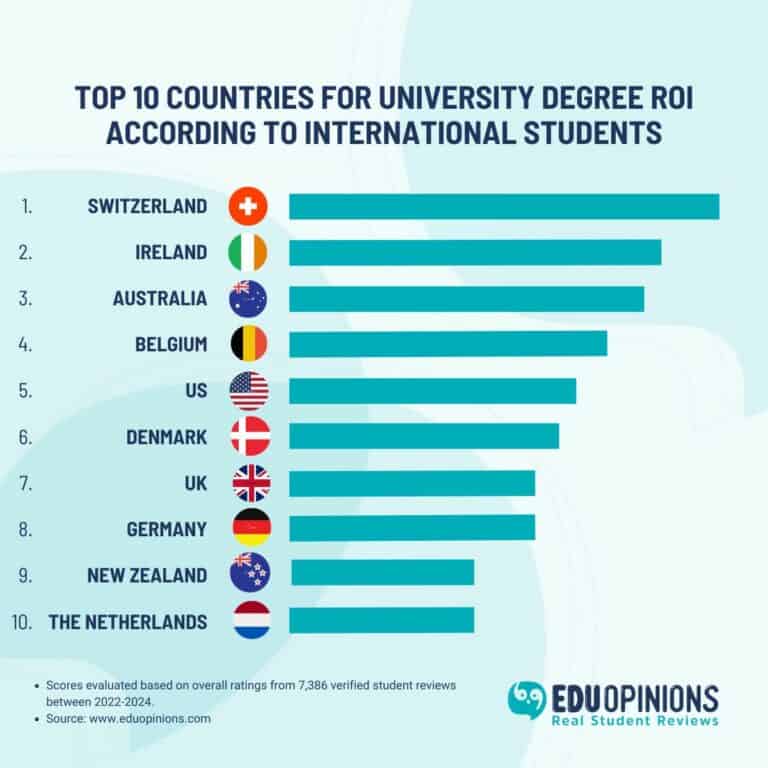When you’re choosing where to study, there are so many factors that will influence your decision. Picking a degree you’ll enjoy, in a place you’ll like living, and a university that will support you as you take the first steps in your career. Add to that the choice of whether to choose a public or a private university, and your decision gets even more complex. So, what are the differences between public and private universities in Europe?
Education systems vary across Europe. However, most European countries have both public (that is, funded by the government) and private (for-profit, independent) universities. For example, Germany has around 400 university institutions, of which 114 are private. Poland, meanwhile, has about 326 private universities.
But the biggest difference between these two types of institutions isn’t just with how they’re funded. Private and public universities can offer different advantages – and disadvantages – to students depending on the subject you want to study and the lifestyle you’re seeking.
So, let’s explain the top five differences between public and private universities in Europe.
Differences Between Public and Private Universities
1. Private Universities Are Usually More Expensive.

Public universities are usually either fully funded or part-funded by national governments. This means that public universities usually come with relatively low tuition fees in contrast to private universities – though just how low these fees are will depend on your country of study.
Here are some typical public university tuition fees for international students in different countries in Europe:
- Germany: €0-€1,500 per semester depending on the German state, plus semester fee (approx. €100-€350)
- United Kingdom: €11,500-€45,000 per year
- France: €2,000-€4,000 per year
- The Netherlands: €6,000-€20,000 per year
- Spain: €700-€2,000 per year
Private universities, on the other hand, are funded in part by higher tuition fees, as well as private funds and donations. Here are some typical tuition fees for private universities in the same countries as above.
- Germany: SRH University Heidelberg, €5,000-€6,500 per semester
- United Kingdom: Regent’s University, €23,000-€35,000 per year
- France: The American University of Paris, €35,000 per year
- The Netherlands: Nyenrode Business University, €22,000-€40,000 per year
- Spain: IE University, €25,000-€45,000 per year, €90,000 per year for MBA degrees
2. There are More Students at Public Universities.

Because public universities are more accessible and are part of government education systems, they typically attract more students than private universities. This has both its pros and cons, as we’ll see.
Firstly, to illustrate the difference in student numbers, let’s take two universities in Berlin. ESMT Berlin is a private business school – one of the best in Germany – but has a student population of just 991 students. On the other hand, Technische Universität Berlin – also regarded as one of the best universities in Germany – has about 33,000 students.
Similarly, in London, there are also significant differences in student populations at public and private universities. Richmond, The American International University in London is a private university that offers joint US and UK degrees and has about 1,000 students. University College London, on the other hand, boasts over 43,000 students.
As a result of greater student numbers, public universities may often feel more diverse and multicultural. Additionally, there may be more opportunities to connect with students from different student groups and employers, both through industry networking experiences and through extracurricular groups.
However, some students may prefer the more close-knit communities that are present at private schools. With fewer students, individuals can form close relationships with professors and other school staff, which can improve networking opportunities.
3. Some Private Universities May Have a Religious Affiliation.

Across Europe, many private universities receive funding from religious groups. A common affiliation for some private universities is with the Catholic Church, such as the Università Cattolica del Sacro Cuore in Italy and Comillas Pontifical University in Spain.
As public universities receive funding from the government, they are more likely to be secular. However, if you’re religious and are looking for an institution and student body that shares your values, a private university could be a good option.
4. Private Universities May be More Specialised.

Public universities generally appeal to a wide variety of students and have a huge range of courses across science and humanities. Private universities, meanwhile, have the ability to specialise in just one subject, which they then teach to a high level.
For example, private universities might focus on one of the following subjects:
- Medicine
- Business and management
- Humanities
- Technology
- Engineering
- Nursing
- Art
If you’re a student looking to study any of the above subjects at the university level, you’ll be able to find private universities that specialise in them. While tuition fees at these schools may be higher, you’ll benefit from smaller class sizes, more interaction between students and teachers, and strong industry links.
5. Facilities May be More Expensive at Public Universities.

While many private universities offer campuses just as large as public universities, the comparative size of the student body at public universities usually makes for a larger university. So, on public university campuses, you’ll usually find a range of amenities, including large libraries, halls of residence, cafes, restaurants, sports facilities, or bars.
Because of their size, public universities also tend to have a range of extracurricular student groups you can join, across a range of interests.
On the other hand, higher tuition fees and large donations at private universities mean their facilities can sometimes be more up-to-date than public universities, which may suffer from declining government funding. However, the only way to check university facilities and see which environment suits you best is to visit in person!
Conclusion
It’s not as simple as saying that public universities are better than private universities or vice versa. There are so many differences between public and private universities in Europe, and you’ll have to take all these factors into account when choosing the right institution for you.
On the whole, if you’re looking for somewhere where you can study with a large, diverse cohort, and get access to lots of broad facilities, then a public university might suit you better. If you have the means to pay higher tuition fees and want a specialist education in a prestigious subject like medicine or engineering, then a private university might help you boost your career prospects.
If you want to know how good Europe’s top universities actually are according to students, read our article on how students rate career prospects at Europe’s top universities.
Recent Posts

The moment you transfer the first tuition fee payment to your university, you'll be thinking of how you can recoup that investment. This is ...

For professionals with a few years' experience already, an MBA can be a great way of boosting your career prospects. From changing jobs or industries ...

Studying abroad for a semester or a full year can be an incredibly enriching experience. You'll get to experience a new culture, meet new people, and ...







